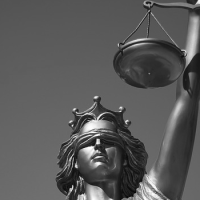So Constitution Day came and went last week, but how many Americans were even aware of it? There was no fanfare, no grand speeches, no parades. It was a quiet day, more or less ignored by Americans, but it was this day, more so than even Independence Day, that really marks the birth of our nation. Where the Declaration of Independence described the why for the nation, the Constitution and the Bill of Rights established the how. It is the framework of government of our society, enshrining the values of the Revolutionary War, and ultimately what defined the United States.
When the the framers of the Constitution of the United States set out to establish a new government after the Confederation had failed, they intended to establish a government that would lead to a stable Republic. To those ends, they focused on three critical things:
- establish the structure and limits of the federal government, because society without government is chaos, and government without limits is tyranny.
- define the three parties to the United States: the federal government, the States, and the People, because a government does not exist without the People, and the States are the natural homes and allegiances of the people.
- and acknowledge and protect the inherent rights of the People and of the States, because the rights of the States and the People naturally exist, and the abridging of those rights is tyranny.
These three philosophical pillars of the American federalist experiment are absolutely necessary to the Constitution. Remove any one, and the Constitution falls apart. Unfortunately, a sound case can be made that these pillars no longer stand. Americans of all stripes should be concerned, because unrestrained government ultimately benefits only those with political power.
Chipping Away at the Edges
For many Americans, the erosion of the Constitution remains invisible. Like a tree rotting on the inside, the leaves remain green, and the limbs appear strong. There are just a few bare branches at the top of the tree. It’s those limbs that are fed by the core, and that’s not a sign of a healthy tree. When looking at our government, there are plenty of dead branches.
The primary function of the Constitution is to define the form and limits of the government. The Republic can’t survive without these limits. And in the opinion of many in government, these limitations on government no longer exist. For example, when pressed on the roles and powers of government, Former US Representative Pete Stark (Democrat), California 13th District, famously replied, “The Federal Government can do most anything in this country.” Does that sound like a limited government?
From 2009 to 2013, under the leadership of then Senate Leader Harry Reid, the United States Senate failed to pass even a single federal budget (thehill.com), despite it being the primary function and duty of the Congress. No other branch has the power to pass a budget. This failure led to a series of budgetary crises and makes clear the Democratic leadership of the Senate did not take seriously the duty of Congress to control the costs of government.
In November 2014, when President Obama signed an executive order that countermanded immigration law, in clear violation of the Constitution (www.politifact.com), there can be no illusion at all that President Obama believes in a Constitutionally limited Executive branch. Together with the disregard of Constitutional limits and duties within the House and the Senate, those within our federal government obviously have little, if any, regard for the Constitution.
As to the States and the People, the 17th Amendment passed in 1913 at the height of the progressive movement in the United States eliminated the representation of States in Congress by changing how Senators were selected. From being chosen by the State Legislatures, Senators became elected by a direct popular election. While this seemed to have increased the influence of democracy, the Senate was supposed to provide the States themselves a direct hand in the legislative process, particularly when it came to foreign negotiations and dealing with out of control presidents who were impeached.
Without representation in Congress, the States are forced to seek redress of encroachment of their powers and liberties in the Supreme Court, a branch of government which is appointed by members of the executive branch. The Senate now favors the power of political parties and the lobbies that fund them, instead of representing the political necessities of the States. Further, one of the most important, if rarely utilized, functions of the US Congress is the creation and proposing of Amendments to the Constitution. Without a voice in the Congress, where is the power of the States to protect their 9th and 10th Amendment rights?
Finally, the inherent Natural Rights, of the People have been seriously eroded. In the Constitution, as it was originally crafted, one of the core protections of the rights of property of the individual in the United States. This was done through Article I, Section 9, Clause 4, which protected American citizens from taxation without the Congress performing an apportionment of costs to all individuals, as we were, at that time, a nation of equals. This required Congress to (1) know the overall cost of a given budget and (2) keep the budget consistent with the ability of the American People to pay. Congress could not, under the original wording, pass discriminatory direct and often punitive taxes on a certain groups, which was a lesson from the Revolutionary War.
The 4th and 9th Amendments in the Bill of Rights were specifically to ensure that the people would be “secure in their persons, houses, papers, and effects, against unreasonable searches and seizures“. For example, the federal government could not seize a person’s income, property, or wealth because “it was unfair of them to have more than someone else“. Even expenses on moral goods, such as welfare spending, were clearly understood to be beyond the Constitution. James Madison, the Father of the Constitution, famously said “I cannot undertake to lay my finger on that article of the Constitution which granted a right to Congress of expending, on objects of benevolence, the money of their constituents.“
It was this understanding of the Constitution, by the very men who crafted it that determined the political and economic policy of the United States. From 1788 to 1861, there were no taxes imposed on the personal incomes of individuals of any kind. Even the income tax passed in 1861, passed in the midst of the Civil War to cover budget short falls due to military expenses, was short lived, facing fierce resistance, and was repealed in 1862 when another tax was passed with a specific expiration date of 1866.
For 101 of the 106 years between 1788 and 1894, there were no income taxes of any kind imposed on the people. In 1894, the progressives in control of Congress and the office of President (Grover Cleveland) passed the Wilson-Gorman Tariff, which imposed the first peace time income tax on private citizens of 2% on only the very rich. This was quickly challenged and overturned as unconstitutional by the Supreme Court in 1895. And that’s began the fight from the progressive leftists to change the Constitution in dire ways.
Power Corrupts
First, the 16th Amendment removed the limit on the power of Congress to lay taxes upon the people. The private incomes of the people, for the first time in America’s history, was treated like business incomes, and the taxes could be imposed without any regard to how much was actually needed nor how many people were being taken from. And, most importantly, constituents could potentially impose taxes and duties on other constituents against their consent, instead of the imposition of taxation on all people in proportion to the need of government and the number of individuals.
Second, the 17th Amendment, of course, eliminated the influence of States in Congress, and thus disenfranchised one of the major constituents of the Constitution from representation and thus political control of the federal government. Curiously enough, this resulted in the States being placed in the very same position that they had been in the 18th Century, and the very reason for which the Revolutionary War was fought.
Freed from these restraints, the federal government has grown from less than 5% of GDP in the beginning of the 20th Century to around 20% of GDP today (www.usgovernmentspending.com). The accumulated federal debt was less than 20% of the GDP at the turn of the 20th Century, and is over 100% of GDP today (www.usgovernmentspending.com). Looking at the chart of federal debt, we see debt immediately balloon after the 16th and 17th Amendments, continuing to grow unabated for the next century. This is a direct result of Congress no longer having to carefully weigh the expense of government against the ability of the American people to pay.
How does our nation find itself back to Constitutional sanity? That is the subject for another essay.
Liberty is For The Win!






